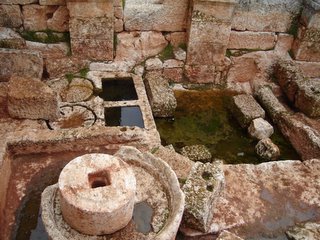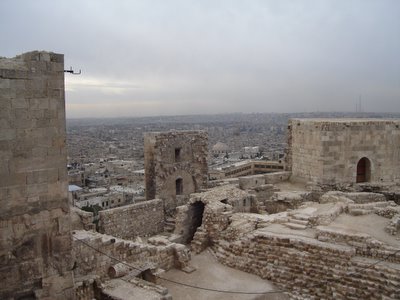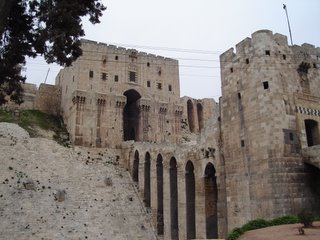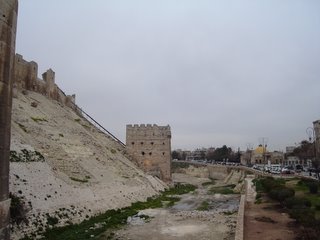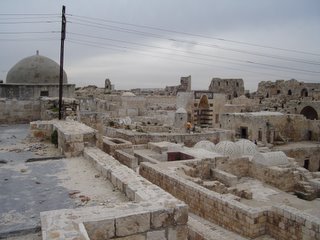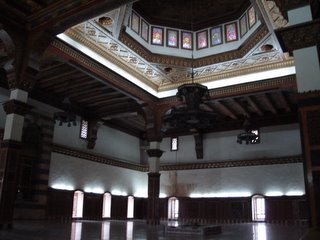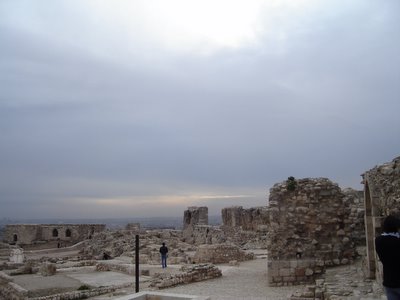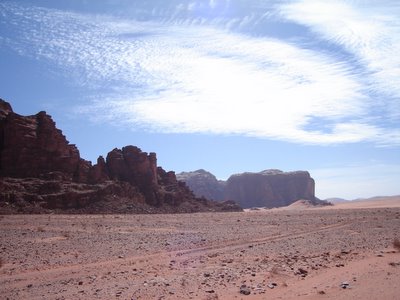The Monastery of Simon
 The Monastery with pillar leftover at center.
The Monastery with pillar leftover at center.
This place was constructed in 490 BC- at the time it was the largest church in the world. Eventually, it was fortified into a castle(surprise, surprise) and was a major stronghold for Christians when Islam came to Syria. And it all started with the life of an eccentric man.
Simon was a shepherd's son who moved into a monastery at a young age. As he became more and more pious, he became greatly annoyed with people and distraction. First he moved into a cave, but when people came on pilgrimmages to see this holy man, he became more agitated and then he began with the building of his pillars.
He started with a 10 foot high pillar, which he lived on. He wanted to be closer to God, and further from people. After 40 years of living on pillars, his last being almost 40 feet high, he became one of the most famous people of the 5th Century. People would come from miles away to see him and ask him questions. Sometimes he would answer, but mostly he just prayed, ate the food that people gave him, and pooped in the hole in the center of his pillar. And they praise him for this....
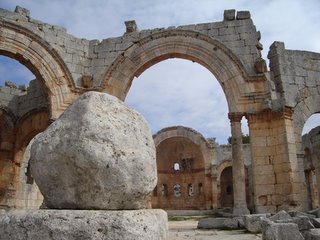
This stone is all that is left of Simon's 18 meter tall pillar. The monastery was built in the shape of the cross with the pillar at its center. Even though it is in ruins, the grandeur of the place still lasts.
The monastery takes up an incredible area. I tried to imagine the whole thing roofed. It must have been a sight.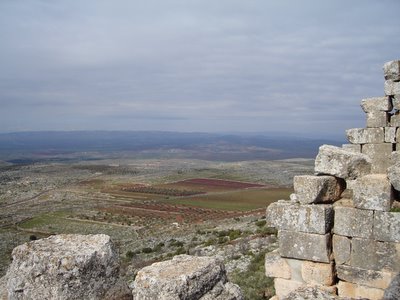
And the view is not half bad either.



